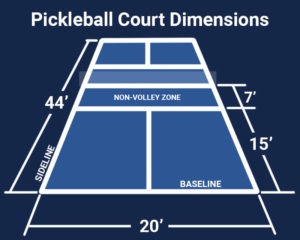Building a Pickleball Court Construction-- Specialist Construction for Quality Play
Building a Pickleball Court Construction-- Specialist Construction for Quality Play
Blog Article
Lasting Practices in Pickleball Court Building You Should Know
As the popularity of pickleball proceeds to climb, so as well does the requirement for sustainable practices in court construction. This method not only addresses environmental issues but also improves the long life and capability of the courts. From choosing environment-friendly materials to implementing efficient drainage and energy-saving lights remedies, there are various strategies to take into consideration. Yet, the effect of these techniques expands far past the court itself. Understanding how each element contributes to a more sustainable future welcomes better expedition into the complex equilibrium between recreational development and environmental stewardship.
Selecting Eco-Friendly Materials
Selecting environmentally friendly materials is a vital action in the construction of lasting pickleball courts. The option of sustainable products not only reduces environmental influence yet additionally boosts the longevity and performance of the court. Secret materials include recycled rubber for the surface area, which provides superb resilience and shock absorption while drawing away waste from landfills.
In addition, using locally sourced products decreases transport emissions and sustains regional economic climates. Pickleball court construction. For instance, making use of native hardwoods for secure fencing and seats can give a sustainable aesthetic while making sure durability against the aspects.
Including absorptive products for court foundations can even more add to sustainability by permitting all-natural water drainage and minimizing drainage. These choices not only safeguard neighborhood ecological communities yet additionally promote healthier play atmospheres.
Effective Drain Solutions
While the option of environment-friendly materials is important, applying effective water drainage options is equally crucial for maintaining sustainable pickleball courts. Appropriate drainage not just shields the court surface from water damages yet additionally lessens disintegration and overflow, advertising ecological honesty.
Efficient drain systems can consist of permeable paving, which allows water to infiltrate the ground instead of merging externally. This decreases the possibility of standing water, which can bring about mold and mildew and various other maintenance problems. Additionally, incorporating tactically placed water drainage networks and swales can direct excess water away from the court area, making certain a dry playing surface area and stopping soil disintegration.
Utilizing native greenery in the landscape design around the courts can even more improve water drainage by absorbing excess water and reducing drainage. These plants call for less irrigation and promote biodiversity, aligning with lasting techniques.
Additionally, it is essential to regularly maintain the drain system to guarantee its long-term efficiency. This includes clearing up debris and surveillance for blockages. By prioritizing effective water drainage solutions, pickleball court fabricators can significantly add to the sustainability and long life of the facility, ultimately profiting both players and the environment.
Energy-Efficient Lights Options
As the need for pickleball continues to grow, integrating energy-efficient illumination options into court layout has actually ended up being progressively vital for sustainability. Conventional illumination systems frequently eat too much power, adding to higher functional expenses and environmental effect. Adopting modern, energy-efficient innovations is essential for both new building and constructions and improvements.
LED (Light Emitting Diode) illumination attracts attention as a leading choice as a result of its longevity and energy cost savings (Pickleball court construction). Compared to standard lighting, LEDs utilize roughly 75% much less power and can last up to 25 times longer, considerably decreasing upkeep costs. Additionally, the directional nature of LED illumination decreases light pollution, making sure that illumination is concentrated on the court as opposed to surrounding areas.

Sustainable Surface Area Alternatives
Discovering sustainable surface options for pickleball courts has gotten grip amongst players and building contractors alike. The emphasis on environmentally friendly products not only lines up with the expanding ecological understanding but likewise improves the performance and resilience of the courts.
One prominent choice is making use of recycled rubber, which can be sourced from utilized tires. This material provides superb shock absorption, lowering the risk of injuries for players while advertising sustainability. Additionally, modular ceramic tiles made from recycled plastics provide an imp source additional practical option. These ceramic tiles are simple to change and install, and their adaptability permits for various court arrangements.
Natural grass courts are also arising as a lasting selection, promoting biodiversity and decreasing the heat island effect. They need regular maintenance and water, which might not straighten with all sustainability objectives.
Water Conservation Techniques

Another reliable method involves the installation of rain harvesting systems. These systems collect and save rainwater for use in keeping court surfaces and landscape design. This strategy not only saves safe and clean water but additionally minimizes reliance on local sources.
Furthermore, using drought-resistant landscaping around the courts is necessary. Indigenous plants call for less water and are better adjusted to neighborhood climate problems, thus reducing total water intake. In addition, utilizing efficient irrigation systems, such as drip irrigation, makes sure that water is provided straight to plant origins, decreasing dissipation and waste.
Verdict
Incorporating sustainable practices in pickleball court construction considerably adds to environmental preservation and source performance. Making use of eco-friendly products, applying reliable drain remedies, and embracing energy-efficient illumination alternatives can substantially lower environmental effect. Exploring lasting surface area alternatives and utilizing water preservation techniques boost the general sustainability of these recreational centers. By focusing on these methods, the building of pickleball courts can align with wider environmental objectives while promoting long life and functionality within neighborhoods.
As the popularity of pickleball continues to increase, so also does the demand for lasting methods in court building and construction.Selecting eco-friendly products is an essential step in the building of sustainable pickleball courts. By prioritizing energy-efficient lighting options, pickleball court constructors can contribute to an extra lasting future while fulfilling the demands of players and stakeholders alike.Including lasting surface area choices not just boosts the efficiency of pickleball courts yet additionally leads the way for applying reliable water preservation methods.Integrating sustainable practices in pickleball court construction significantly adds to environmental preservation and source effectiveness.
Report this page